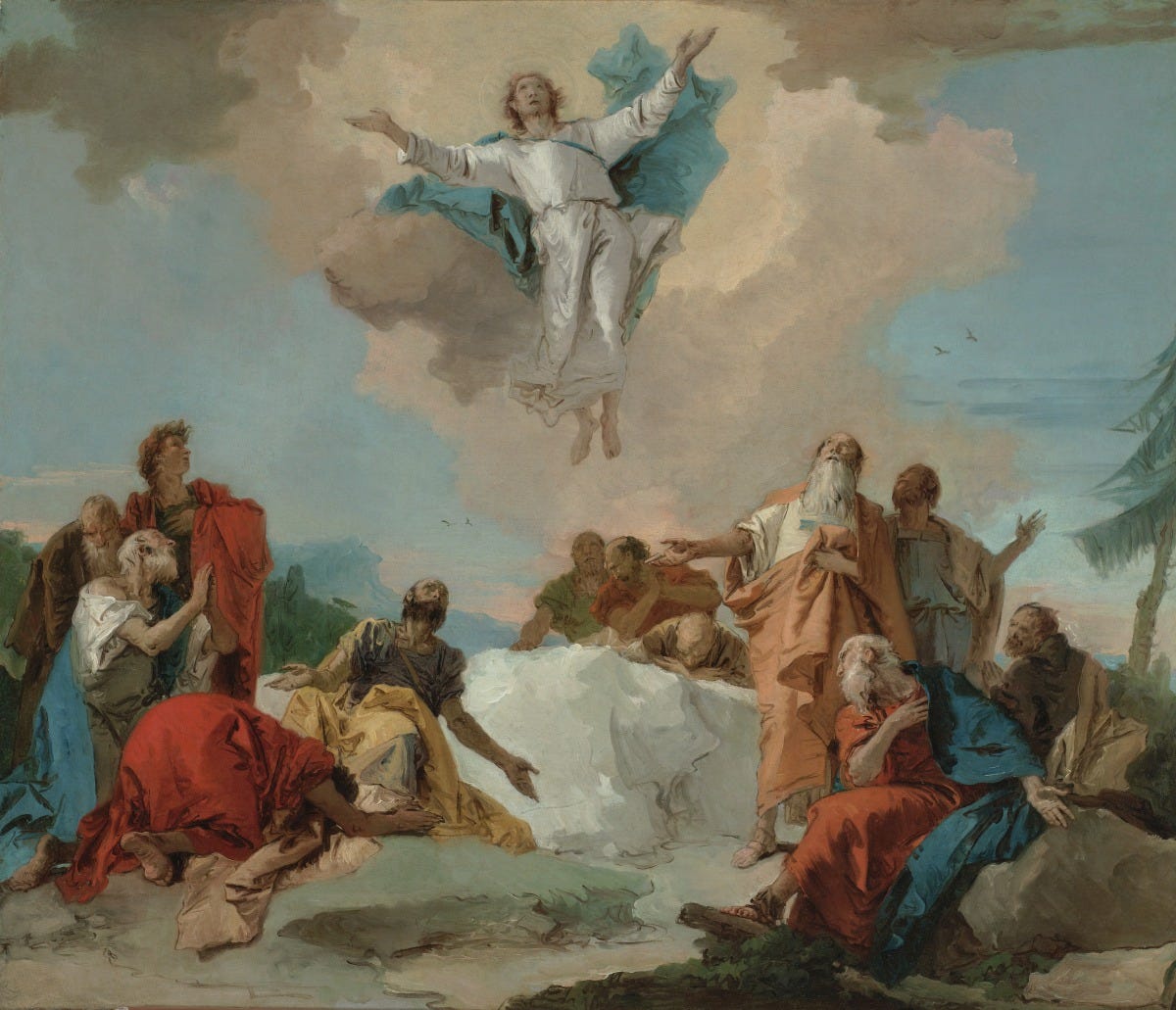Giovanni Domenico Tiepolo, The Ascension of Christ, photograph, 2009, https://commons.wikimedia.org/wiki/File:Tiepolo_-_The_Ascension_of_Christ,_ca._1745-50.jpg.
We find ourselves at a liturgical crossroads, as it were. With the feast of the Ascension, our vision extends to the rapidly approaching conclusion of the Easter season. As the Paschal tide closes, it can appear as if the glory of Christ has passed in addition to that heavenly peace which only Christ’s presence can exude. Therefore, we are left in a more profound realization of the sinfulness of our surroundings and the world at large; a realization which, in turn, can tempt us into discouragement. What is needed, therefore, is hope! A hope rooted in peace and in the reality of Christ’s triumph. The musical piece “Dona Nobis Pacem” can be seen to reflect these sentiments and give us helpful insight into these difficulties of discouragement and temptation.
Composed by Johannes Bach, who was nothing short of a master in his field, “Dona Nobis Pacem” was the final piece for his Mass known as the B Minor Mass. Having been privileged enough to attend a live rendition of this Mass a few years back, I can honestly testify to the beauty of each score making up the whole of this orchestration. Yet, “Dona Nobis Pacem” resounds in a special way with the listener. For, its prominent message seemingly is hope: it is a vibrant hope in Christ when He says, “Peace I leave with you, my peace I give unto you: not as the world giveth, do I give unto you. Let not your heart be troubled, nor let it be afraid,” (Jn 14:27, DRV).1 “Dona Nobis Pacem” translates literally to mean “Give us peace” and hence, with this plea is also seen a firm realization of our need for peace as well as a belief in His power to effect it. Thus, throughout the course of the piece, this musical composition seemingly demonstrates for us the arduous journey we each face in attaining peace which can often be a constant fluctuation between a bold hope as well as a timidity in discouragement.
This aforementioned piece of music begins with a strain of quiet hopefulness not without a note of timorousness. (Link below) The initial notes ascend chronologically in a way that reminds of us Christ’s ascent into heaven. Coupled with this acknowledgment is a palpable longing to join Him. The hymn reaches a fuller degree of its potential at the second utterance of the words “Dona Nobis Pacem” whereupon all parts join in an overlap of continuance. Interchanging between notes of bold fearlessness and timidity, the hymn brings the listener into the contrasting reality of haunting sadness and soaring triumph in the spiritual life which is balanced by the thread of hope weaved throughout the ups and downs of the whole piece. This exchange between the minor and major tones within the piece serves as a catalyst for the climax on the glorious word “pacem”, a profound and magnificent peace that is indeed founded on the life of Our Risen Savior who “is sitting at the right hand of God,” (Col 3:1) and who, almighty, has overcome the world.
The theme of hope and peace is one which is not foreign to the feast of the Ascension, regarding which the Divine Intimacy states, “The Lord realized {the Apostles} state of mind and consoled them once more, promising the coming of the Holy Spirit…”2 Therefore, for the Apostles and every Christian who comes after, faith and hope take on a new role. As we read in the aforementioned Divine Intimacy “{The Apostles} (t)hen placing their trust in the word of Jesus, which would henceforth be their only support, they returned to Jerusalem…”3 Therefore, like the Apostles, let us “do manfully and let thy heart take courage, and wait thou for the Lord,” (Ps 26:14). Hence, with this sentiment before our eyes, let us ask the Lord for a renewal of His peace in our hearts; for, as Christ has promised us “ u Heaven and earth shall pass, but my words shall not pass,” (Mt 24: 35)
Check out “Dona Nobis Pacem” via the link below!
The Holy Bible: Douay Rheims, (Post Falls, ID: Lepanto Press).
Fr. Gabriel of St Mary Magdalen, O.C.D., “179-The Ascension of Our Lord: Forty Days after Easter,” in Divine Intimacy: Mediations on the Interior Life for Every Day of the Liturgical Year, trans. 7th ed. of the Intimita Divina by the Discalced Carmelite Nuns of Boston, (India: Barionus Press, 2019), 518.
Fr. Gabriel of St Mary Magdalen, O.C.D., “179-The Ascension of Our Lord: Forty Days after Easter,” 519.




